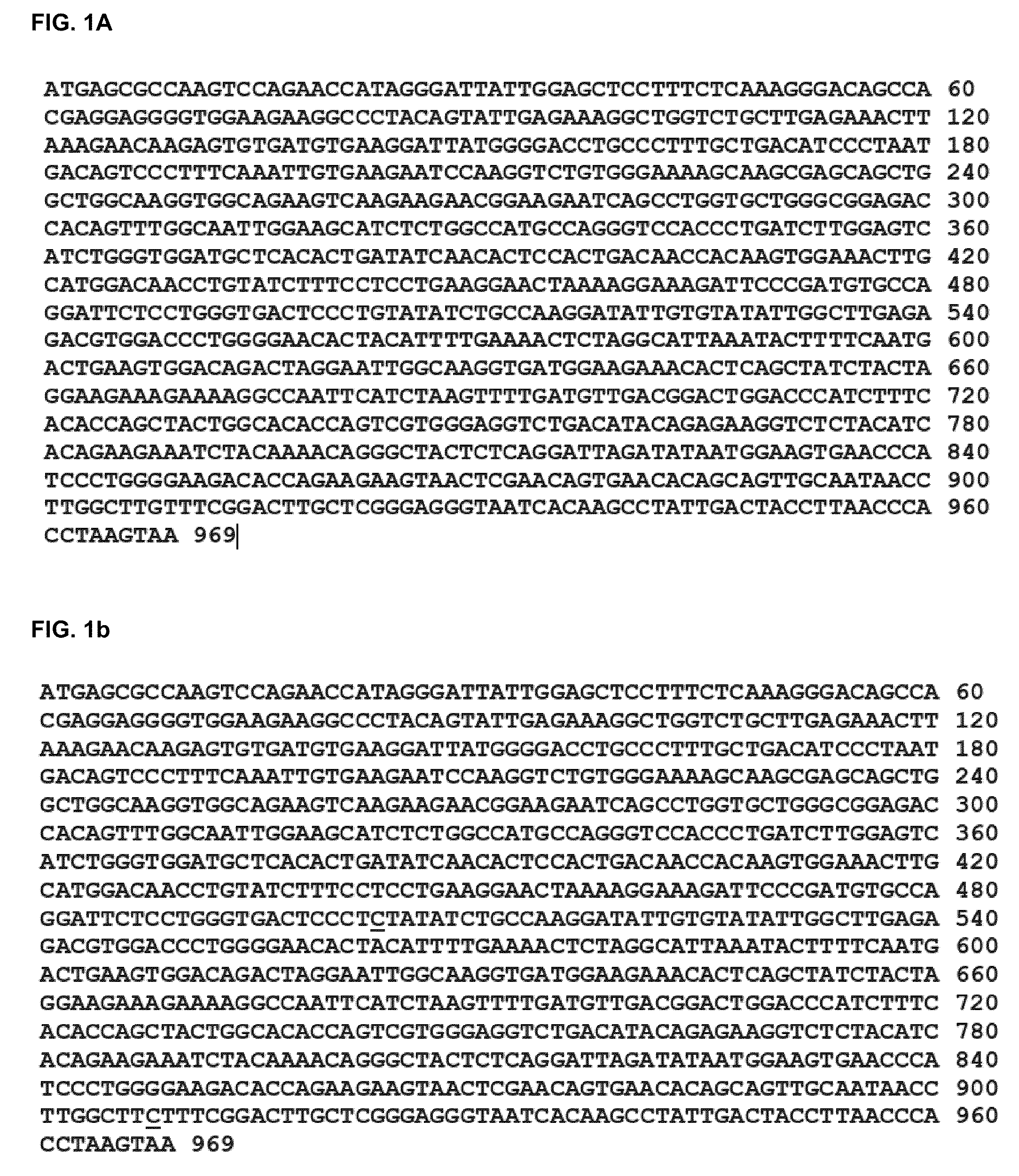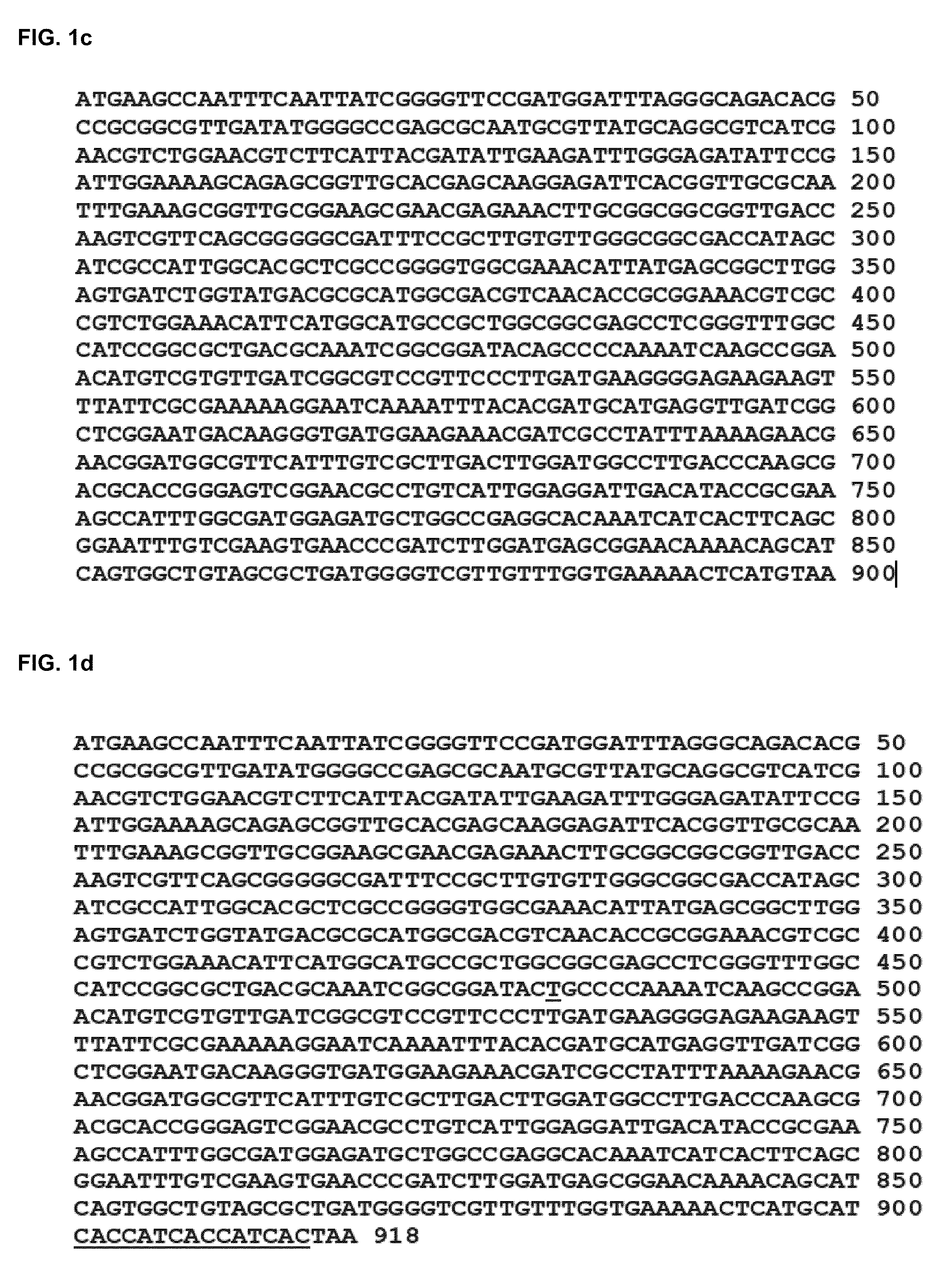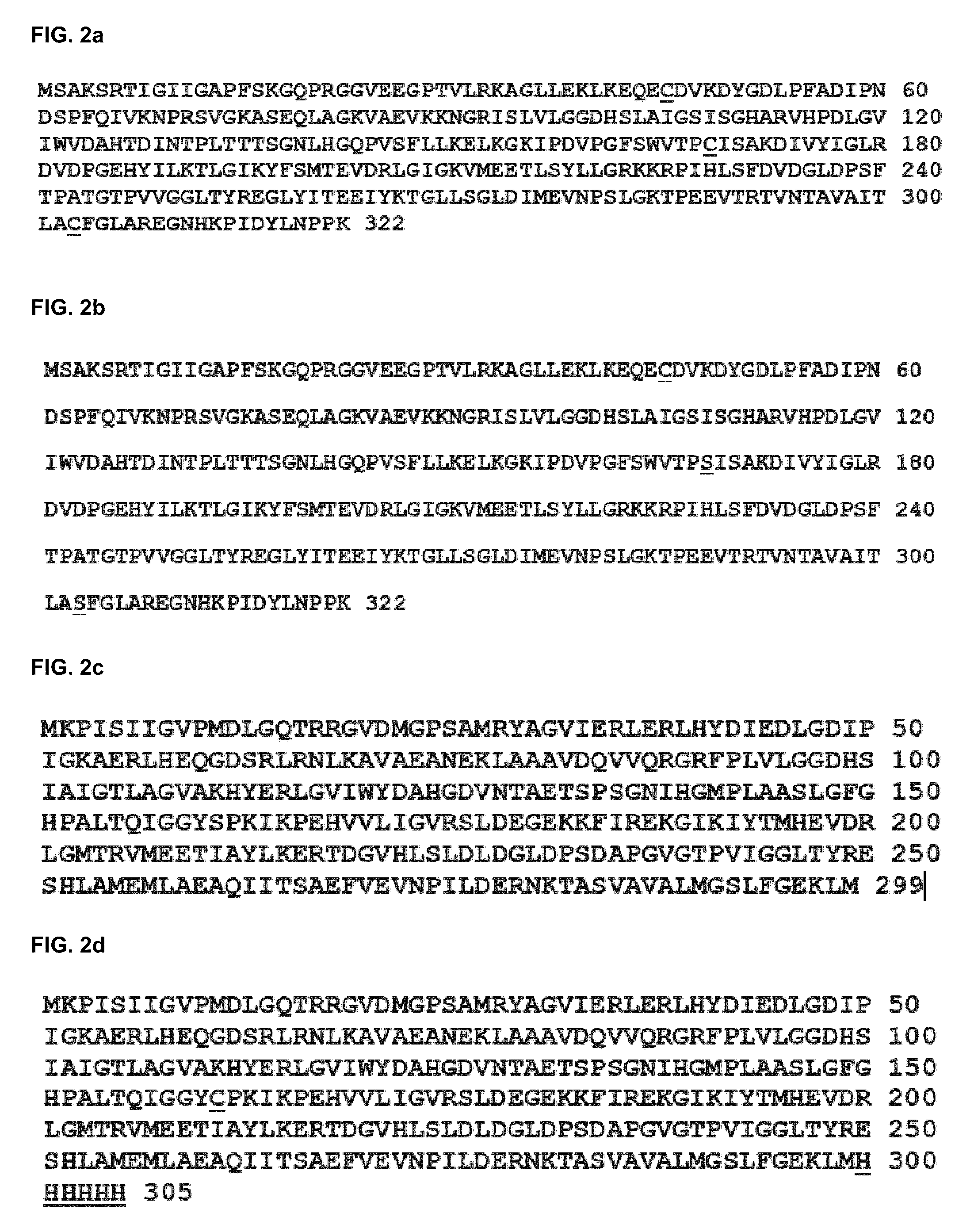Site-directed pegylation of arginases and the use thereof as Anti-cancer and Anti-viral agents
a technology of arginases and pegylation sites, which is applied in the direction of enzyme stabilisation, peptide/protein ingredients, drug compositions, etc., can solve the problems of short pharmacological half-life, short immunogenicity, and difficulty in achieving therapeutically useful blood levels of proteins in patients, and achieves partial or virtually inactive conjugates. , to achieve the effect of enhancing arginase's enzymatic activity and enhancing arginase's
- Summary
- Abstract
- Description
- Claims
- Application Information
AI Technical Summary
Benefits of technology
Problems solved by technology
Method used
Image
Examples
Embodiment Construction
Cloning of Human Arginase I Gene (HAI)
[0035]The gene sequence of human arginase I is shown in FIG. 1a (SEQ ID No: 1). The gene for 6xHis-tagged human arginase I (HAI) was generated by polymerase chain reaction (PCR) from the pAED4 / HAI plasmid using the following oligonucleotides to generate an NdeI site at 5′-end and BamHI site at 3′-end. Primer HuAr07-F: 5′ GAT.ATA.CAT.ATG.CAT.CAC.CAT.CAC 3′ (SEQ ID NO: 17) and Primer HuAr08-R: 5′ AGT.GCA.GGA.TCC.TTA.CTT.AGG.TGG.GTT.AAG.GTA.GTC 3′ (SEQ ID NO:18). The PCR product was cut with NdeI and BamHI and subcloned into pET3a expression plasmid vector (Strategene).
[0036]The pET3a E. coli expression plasmid vector contains a T7 promoter. The T7 promoter is positioned upstream from the gene 10 leader fragment. The correct sequence was confirmed by DNA sequencing the entire coding region for human arginase I (FIG. 1a). This plasmid is referred to as pET3a / HAI.
Cloning of Bacillus caldovelox Arginase Gene (BCA)
[0037]The gene sequence of Bacillus ca...
PUM
| Property | Measurement | Unit |
|---|---|---|
| Volume | aaaaa | aaaaa |
| Volume | aaaaa | aaaaa |
| Volume | aaaaa | aaaaa |
Abstract
Description
Claims
Application Information
 Login to View More
Login to View More - R&D
- Intellectual Property
- Life Sciences
- Materials
- Tech Scout
- Unparalleled Data Quality
- Higher Quality Content
- 60% Fewer Hallucinations
Browse by: Latest US Patents, China's latest patents, Technical Efficacy Thesaurus, Application Domain, Technology Topic, Popular Technical Reports.
© 2025 PatSnap. All rights reserved.Legal|Privacy policy|Modern Slavery Act Transparency Statement|Sitemap|About US| Contact US: help@patsnap.com



